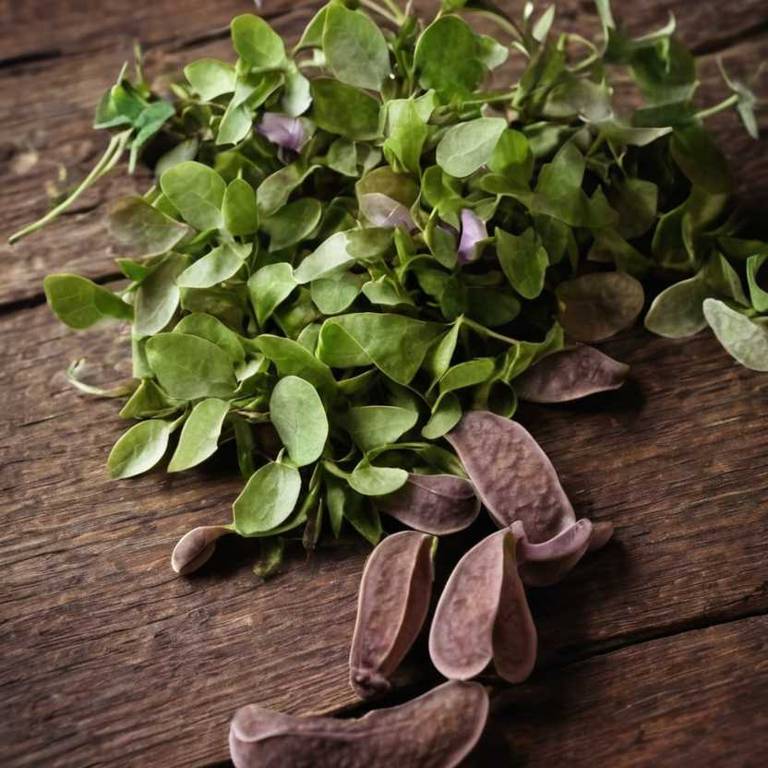By Leen Randell
Updated: Jul 07, 2024
What to know about Aristolochia manshuriensis (chinese birthwort) before using it medicinally

Aristolochia manshuriensis, commonly known as Chinese birthwort, is a plant with a long history of medicinal use, prized for its ability to improve cardiovascular health, lower blood pressure, and reduce inflammation.
As a hardy perennial, it thrives in a variety of environments and is often cultivated in gardens for its ornamental value. Botanically, the plant is characterized by its unique, heart-shaped leaves and twisted, snake-like vines.
Historically, Chinese birthwort has been mentioned in ancient Chinese medical texts, including the "Shennong Ben Cao Jing", one of the oldest known medical texts in Chinese history.
This article explains the medicinal, horticultural, botanical, and historical aspects of Aristolochia manshuriensis.
What are the medicinal properties of Aristolochia manshuriensis?
Aristolochia manshuriensis, also known as Chinese birthwort, helps with treating menstrual disorders, such as amenorrhea and dysmenorrhea, as well as hypertension, and skin conditions like eczema and acne.
The active constituents of Chinese birthwort include aristolochic acid, alkaloids, and flavonoids, which are responsible for its medicinal properties. These compounds have been shown to have anti-inflammatory, antispasmodic, and vasodilatory effects.
The parts of the Chinese birthwort plant most used for medicinal purposes are the leaves, stems, and roots, which are typically harvested in the summer and dried for later use. The plant is usually prepared as a decoction or infusion.
Improper use of Chinese birthwort can lead to side effects like nephrotoxicity, liver damage, and increased risk of cancer. Prolonged use can also cause gastrointestinal problems, such as diarrhea and nausea.
Precautions when using Chinese birthwort medicinally include avoiding use during pregnancy and lactation, and taking it under the guidance of a qualified healthcare professional to minimize potential risks and side effects.
What are the horticulural aspects of Aristolochia manshuriensis?
Aristolochia manshuriensis, also known as Chinese birthwort, grow best in full sun to partial shade in zones 5-8. It thrives in moist, fertile soils with a pH range of 6.0-7.0. Average temperature requirements are between 15-25°C (59-77°F).
To plant Chinese birthwort, choose a location with good air circulation to prevent fungal diseases. Dig a hole twice as wide and as deep as the root ball, and mix in a 2-inch layer of compost or well-rotted manure. Space plants 12-18 inches apart.
Harvesting Chinese birthwort typically occurs in mid to late summer, when the stems are in full bloom. Cut the stems when they are in flower, using clean, sharp pruning tools to minimize damage to the plant. Remove any dead or dying flowers or stems to maintain the plant's appearance.
Pests and diseases affecting Chinese birthwort include root rot caused by Phytophthora, powdery mildew, and scale insects. Regularly inspect the plant for signs of infestation or infection, and take prompt action to control any issues that arise. Implement Integrated Pest Management strategies to minimize harm to the environment.
What are the botanical aspects of Aristolochia manshuriensis?
Aristolochia manshuriensis, also known as Chinese birthwort, is a perennial climber with heart-shaped leaves, 10-20 cm long, cordate-based, and serrate margins, bearing tubular flowers 2-3 cm long. The plant has a woody stem with internodes 5-10 cm long.
Aristolochia manshuriensis belongs to the Aristolochiaceae family and is a member of the Aristolochia genus, which contains about 550 species. The plant's classification is: Kingdom Plantae, Clade Angiosperms, Clade Eudicots, Clade Asterids, Clade Piperales, Family Aristolochiaceae, Genus Aristolochia.
The variants of Aristolochia manshuriensis include 'Higo' and 'Variegata', which are known for their foliage colors and growth habits. These cultivars are often used as ornamental plants in gardens. Some specimens exhibit purple or red tints on their leaves.
Aristolochia manshuriensis is native to East Asia, specifically in China, Japan, Korea, and the Russian Far East. The plant grows in mountainous regions, typically between 600-2,000 meters above sea level. It thrives in moist, temperate climates with high humidity.
The life cycle of Aristolochia manshuriensis begins with seed germination, followed by vegetative growth. The plant produces tubular flowers, which develop into follicles containing seeds. The seeds are dispersed through wind or animal vectors, allowing the plant to propagate.
What are the historical aspects of Aristolochia manshuriensis?
Aristolochia manshuriensis, also known as Chinese birthwort, is an ancient medicinal plant with a long history of use in traditional Chinese medicine. It has been used for centuries to treat various ailments, including fever, rheumatism, and skin conditions. Its therapeutic properties were first documented in the Shennong Bencaojing, a classic Chinese medical text from the 3rd century BCE.
In Chinese mythology, the plant is associated with the birth of the goddess Nuwa, who used its roots to create the first humans. According to legend, the plant's unique shape and appearance symbolize the connection between heaven and earth. The mythological significance of Chinese birthwort reflects its cultural importance in traditional Chinese society.
The plant has been imbued with symbolic meanings across various cultures. In China, it represents longevity, fertility, and good fortune. In some regions, it is believed to have protective properties, warding off evil spirits and misfortune. The symbolic significance of Chinese birthwort underscores its significance in traditional Chinese culture.
The earliest known records of Chinese birthwort date back to the Shang Dynasty (16th-11th centuries BCE), where it was mentioned in the Shujing, a classic Confucian text. The plant's medicinal properties were also described in the Huangdi Neijing, a foundational text of traditional Chinese medicine from the Han Dynasty (206 BCE-220 CE). These historical texts provide valuable insights into the plant's traditional uses and cultural significance.
Archaeological discoveries have revealed artifacts related to Chinese birthwort, including ceramic vessels and figurines from the Eastern Zhou Dynasty (771-256 BCE). These artifacts suggest that the plant was not only used in medicine but also had cultural and spiritual significance. Excavations have also uncovered ancient texts and manuscripts that describe the plant's properties and uses.